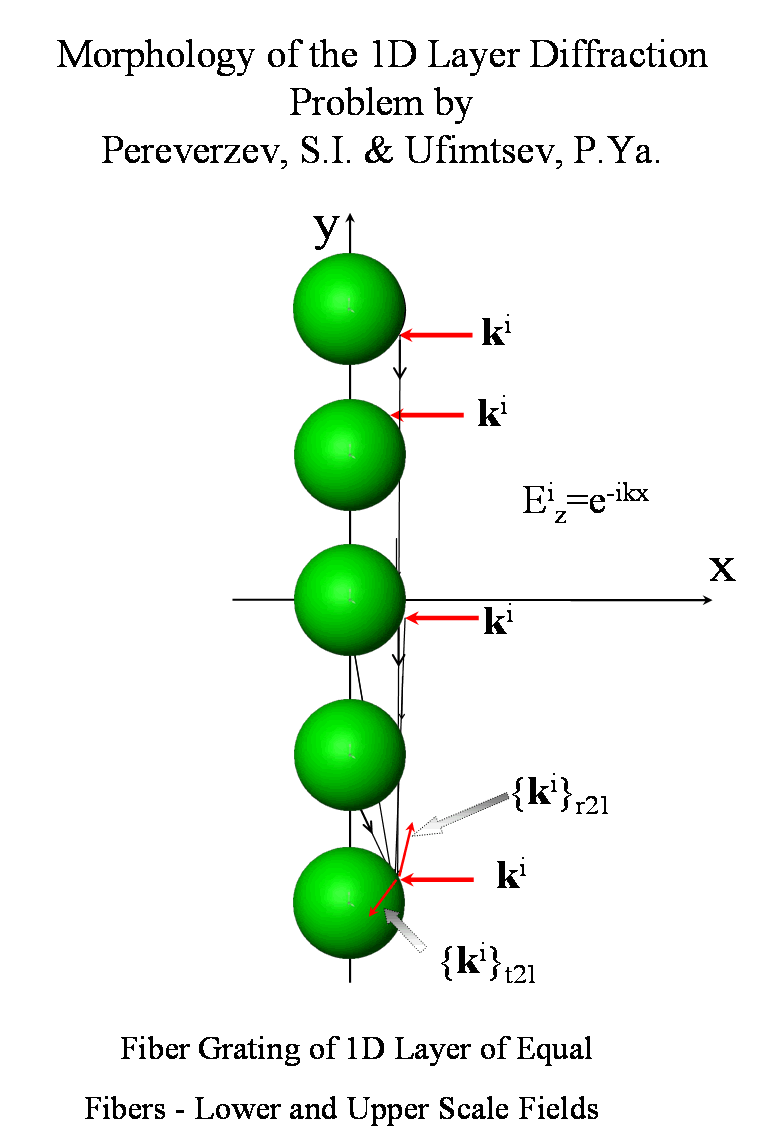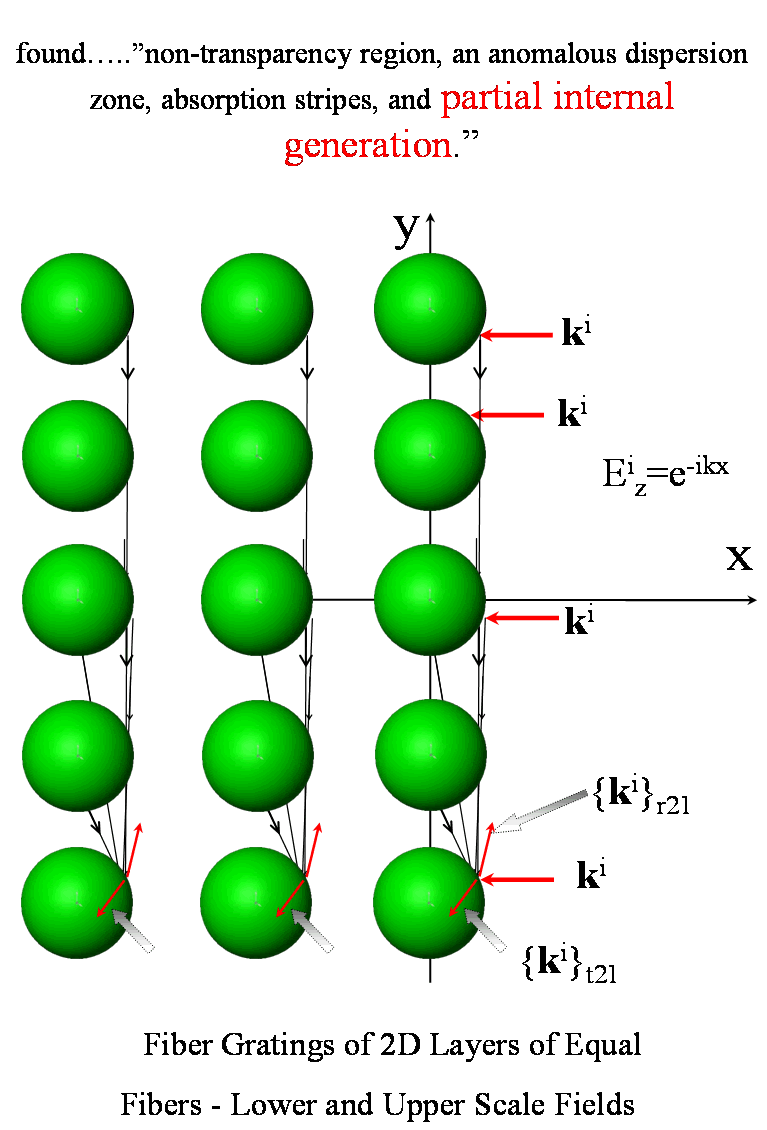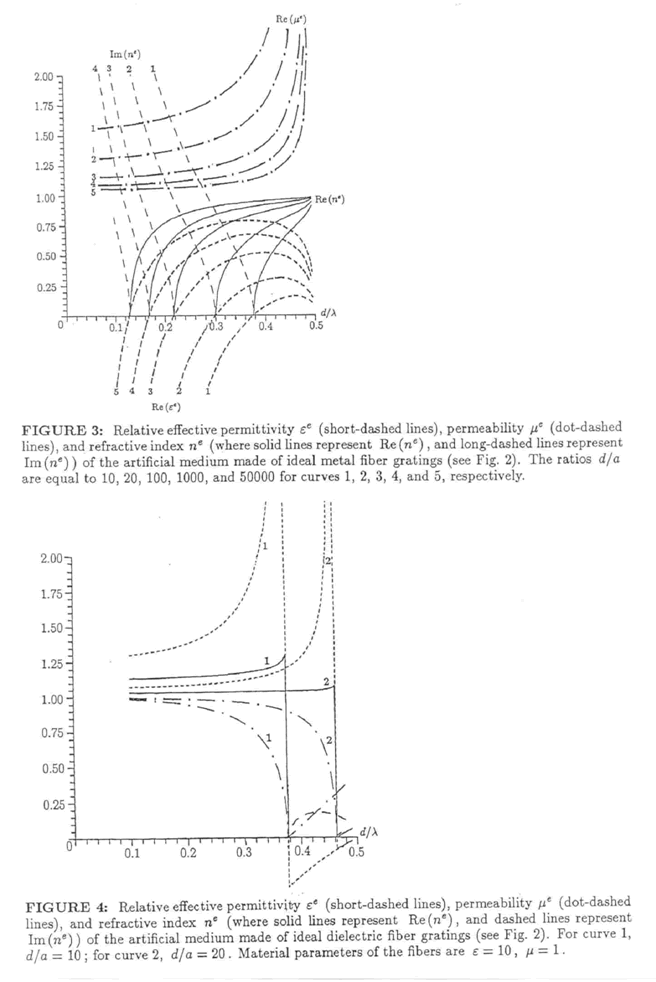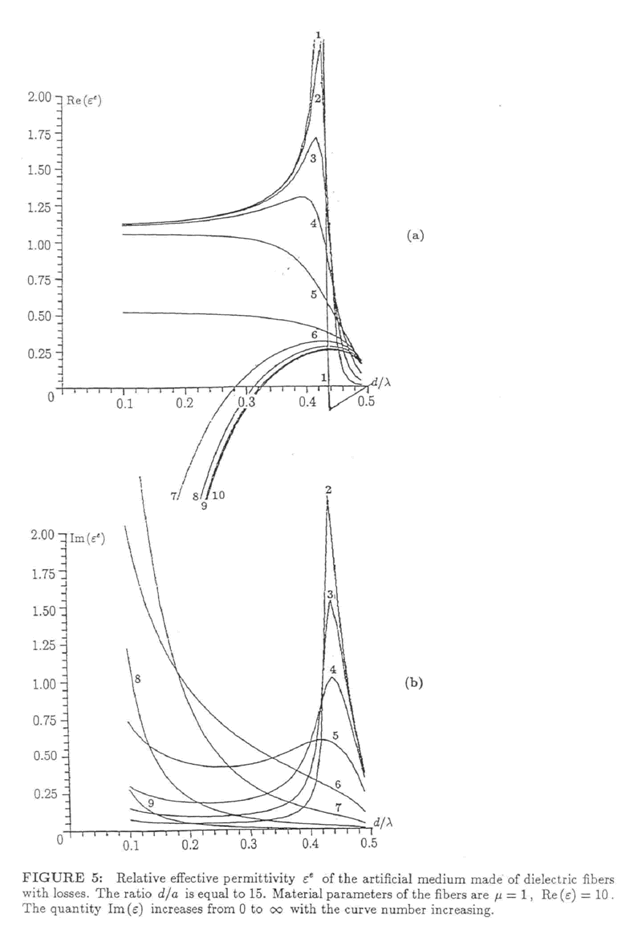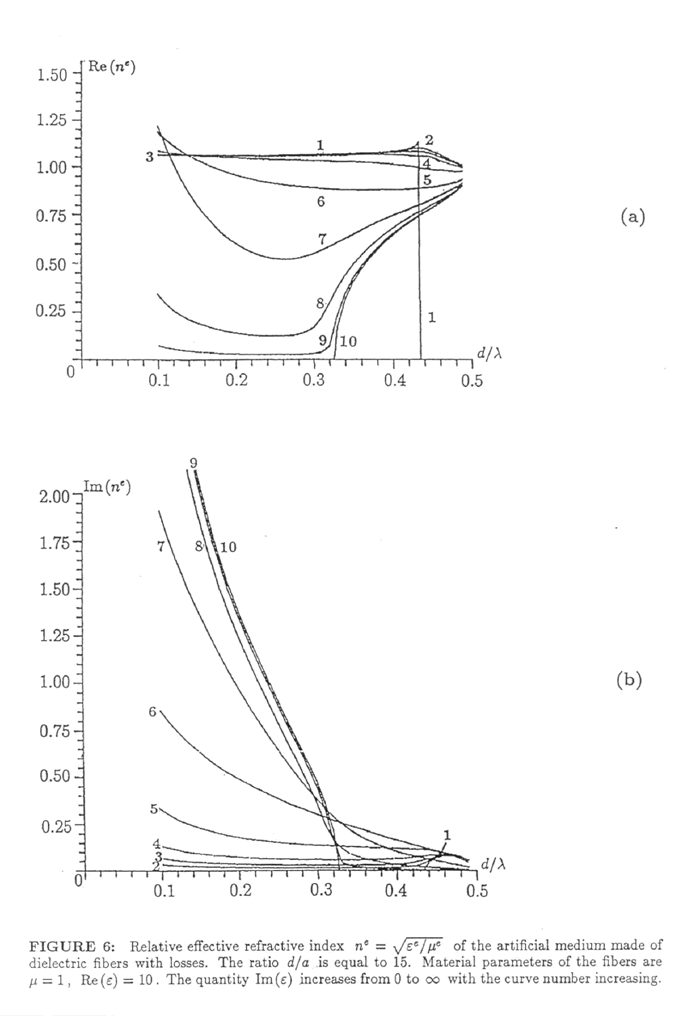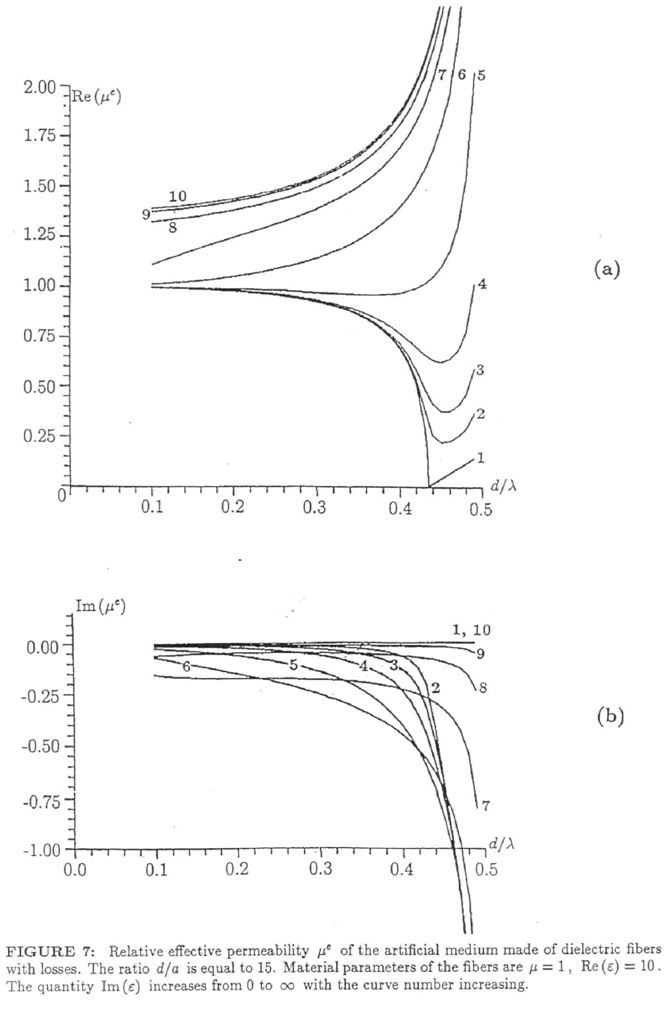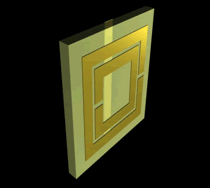
The new, well not completely new, just experimentally confirmed the theoretical analysis and forecast by Veselago (1966,1967,2002,2003), and found by Pendry et al. (1999) with the kind of analysis of "averaged" EM fields, the EM phenomenon have been starting to fill pages of technical journals on electrodynamics and EM waves transmission. In most, if not the all of suggested composite media structures we can see the lower scale unit element. I would like to write some comments on the "averaging" procedures found in the literature.
The starting element - the "double split-ring" unit organized by different combinations into spatial structures (Pendry et al., 1999; Pendry and Smith, cond-mat/0206563; Pendry, 2000; etc. - http://physics.ucsd.edu/~drs ) to be placed under the incident EM wave -

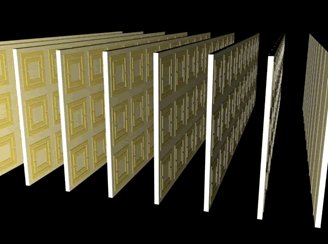
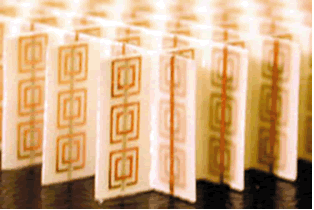
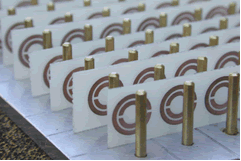
And now everyone can see - that the experimental set-up is pretty much having the features of the Two-scale experiment. There are the lower scale elements (units) of the medium plus the cavity structure to make some number (more or less large) of those initial lower scale elements separated from the environment, see this figure -
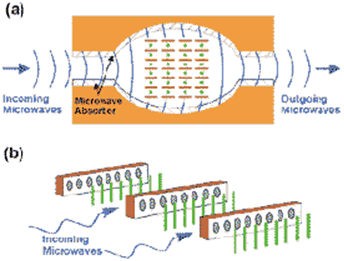
Experimentalists did the one REV set-up to measure the resumed wave packet - multiple transmitted, reflected, scattered sum of waves. Those waves happen to transform the usual seems two-phase composite to the something different - the NRIM composite medium, where just the two phases-components (actually the three phases - the third phase is the supporting metal rings dielectric plates material), usual components, and
gave birth to the new phenomena of - the Negative Refractive Index composite Material (NRIM) transmission.
Note also, that when an element is taken as a single separate unit, it DOES NOT display unusual EM response!
We will be discussing more on these results and phenomena, and would like to start showing the figures I took from the paper by Pereverzev, S.I. and Ufimtsev, P.Ya., (1994), "Effective Permittivity and Permeability of a Fibers Grating", Electromagnetics, Vol. 14, No. 2, pp. 137-151.
The initial set-up here is the 2D equal grid of parallel solid (not hollow) circular bars (fibers). The reason this study should be taken separately is that - because this problem was solved analytically by P.Ya.Ufimtsev and S.I.Pereverzev. Almost all, if not all the other solutions of the like photonic crystal problems with gratings are done using numeric simulation, and due to not the perfect solutions and due to fact that often workers getting what they expecting, those solutions had not observed few features-phenomena, but the non-transparency regions. Meanwhile, Pereverzev and Ufimtsev (1994) found what other workers did not - p. 151 "an anomalous dispersion zone, .... and
Which I like to observe in a quite different problem, that did have no intentions of the two-scale investigation.
More on that - these researchers did make the plots where seen the Negative effective permittivity, permeability, and refractive index -
